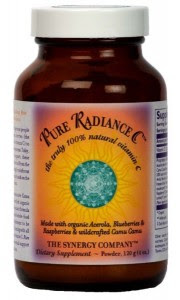Food safety is very important to food manufacturers.
Any careless in raw materials, production or packaging may endanger human health.
Since inception, E.Excel has always placed great emphasis on food safety!
Let's see below for steps and measures E.Excel has taken to commit to your safety.
Good Manufacturing Practice (GMP) which is a basic and stringent guideline for all pharmaceutical (drug) companies to comply to in order to begin production. It emphasizes product quality, hygiene and safety during production processes. However, it is not required for food manufacturers.
E.Excel manufacturing plants are proud to announce that they have obtained GMP certification to maintain their high quality and safety for 30 years.
1. Comprehensive Microorganism Tests (Bacteria E.coli, Salmonella spp, Yeast & Mold etc) on raw materials, production processes and finished products to ensure product safety.
2. Heavy Metals Tests (Mercury, Copper, Arsenic, Lead, Cadmium) to ensure products are free from these harmful component contamination.
3. Pesticides Tests on raw materials to ensure crops are not polluted by pesticides in water used for irrigation or from neighbouring farms.
4. Poison Tests on 1822 different types of poisons including narcotics (eg. cocaine), steroid drugs (eg. cortision), banned drugs (eg. Fenfluramine) and human growth hormones.
4. Poison Tests on 1822 different types of poisons including narcotics (eg. cocaine), steroid drugs (eg. cortision), banned drugs (eg. Fenfluramine) and human growth hormones.
5. Microscopic Test on raw materials for foreign objects like dust, hair, wires.
6. Finished Product Testing to detect accurately objects like metals, glass, plastics, stones, hairs in the products.
7. Stability Testing on finished products to ensure a product's quality does not change during the validity period stated on the product's label.
Additional unique specific tests are also conducted for certain products.
1. Gene modification tests conducted on Soy. Besides organic ingredient, E.Excel uses only non-genetically modified soy that is high in protein.
2. Antibiotics Tests done on all honey, royal jelly and pollen to ensure no presence of antiobiotics before use in production.
3. Caffeine Tests on Aromantic and triflora for caffeine content of green tea leaves to ensure green tea leaves selected are of lowest levels of caffeine.
4. Melamine Tests. E.Excel is proud to announce that melamine has never been detected in E.Excel products.
5. E.Excel processes ginseng immediately after harvest and hence does not go through sulfur-smoke process which will cause serious harm to health.
6. Careful selection of packaging material to meet international safety standards.
Safe and Clean Production Environment based on the below aspects to prevent contamination of raw materials, production processes and packaging to ensure product safety.
1. Humidity
2. Dust
3. Temperature
4. Bacteria
5. Water
6. Automated Production
I appreciated a lot the effort E.Excel has put in to ensure product quality and safety after watching it especially my previous job background was from pharmaceutical plant design line.
E.Excel always places product quality as top priority. The product quality control is of highest standards.
- They constantly consult own professional research team, scientists, university professors and experienced experts from various industries for the product reliability and safety.
- They also have in-house lab in every manufacturing plant (Singapore, California, Utah in US & Shanghai) to do the product quality testings.
- In order to fulfil the principle of Nutritional Immunology, E.Excel has invested heavily on research, ingredients and production.
- E.Excel takes pride in its clean record in product safety for 30 years since 1987.
Hence, you can always rest assured in its continued efforts to keep the products safe and hygienic so that you and your loved ones can enjoy the wholesome goodness of Nutritional Immunology products!! =)
Best Regards,
Joselyne
Nutritional Immunology Consultant
Nutritional Immunology Consultant
+65-9090 9942























